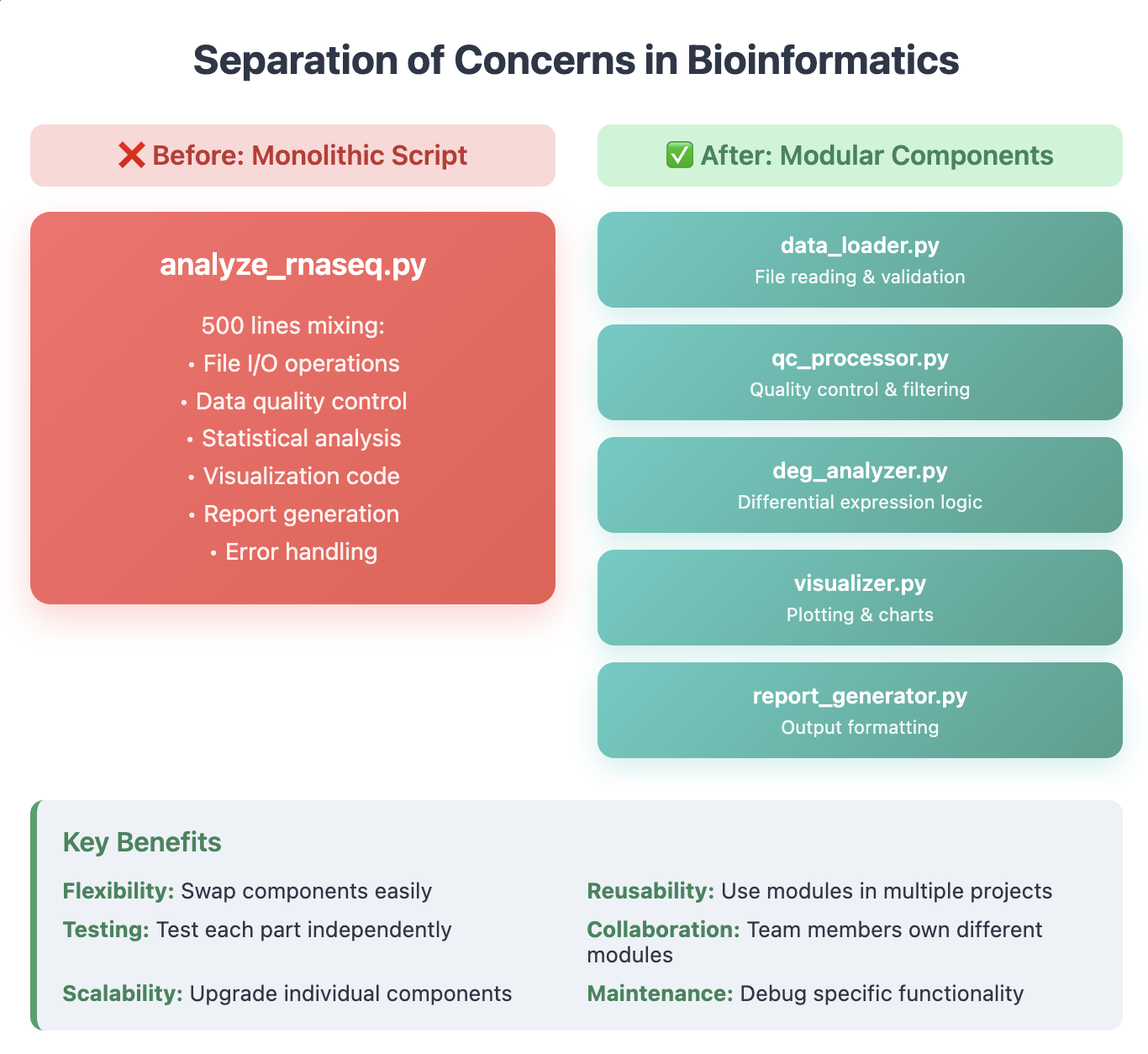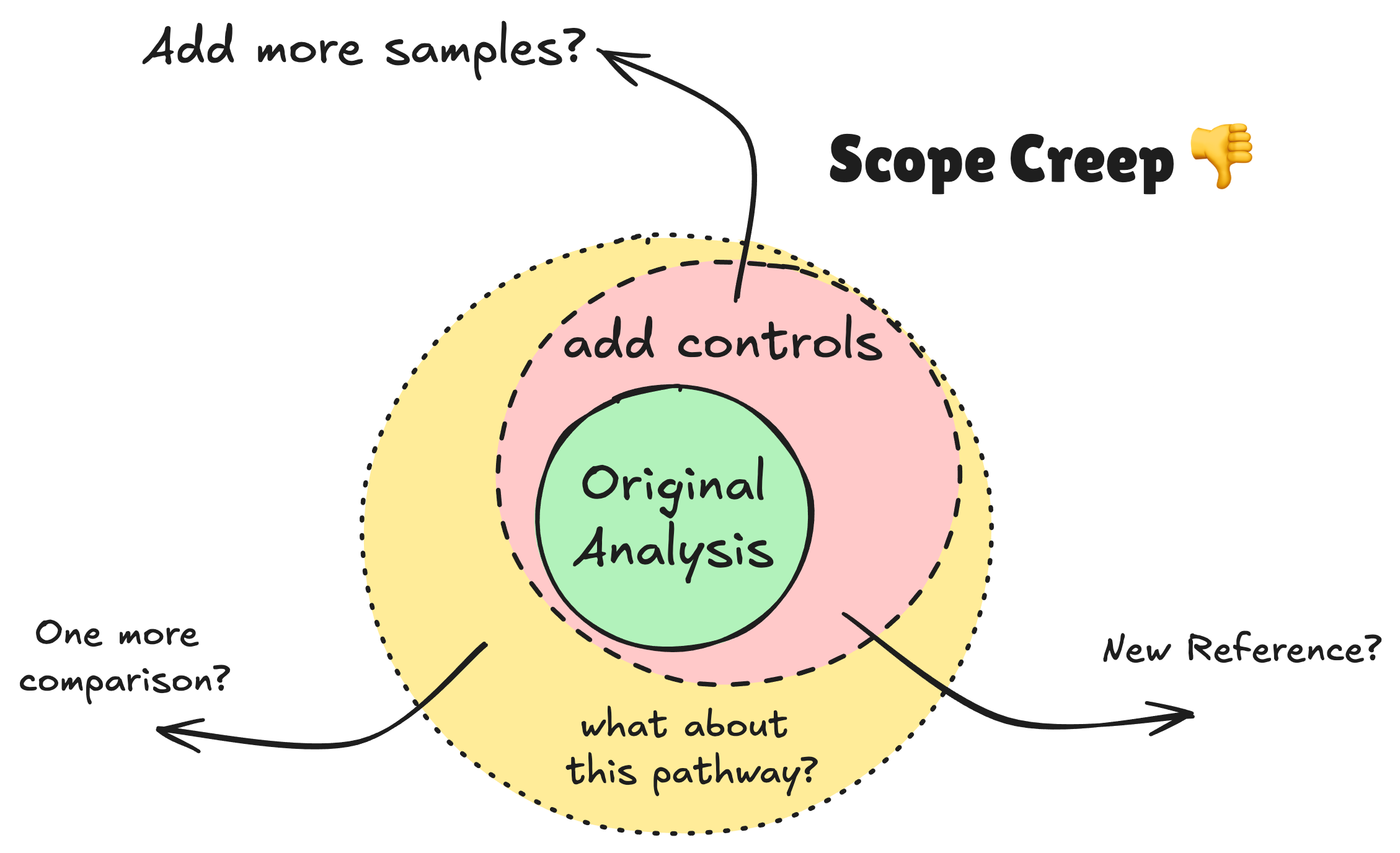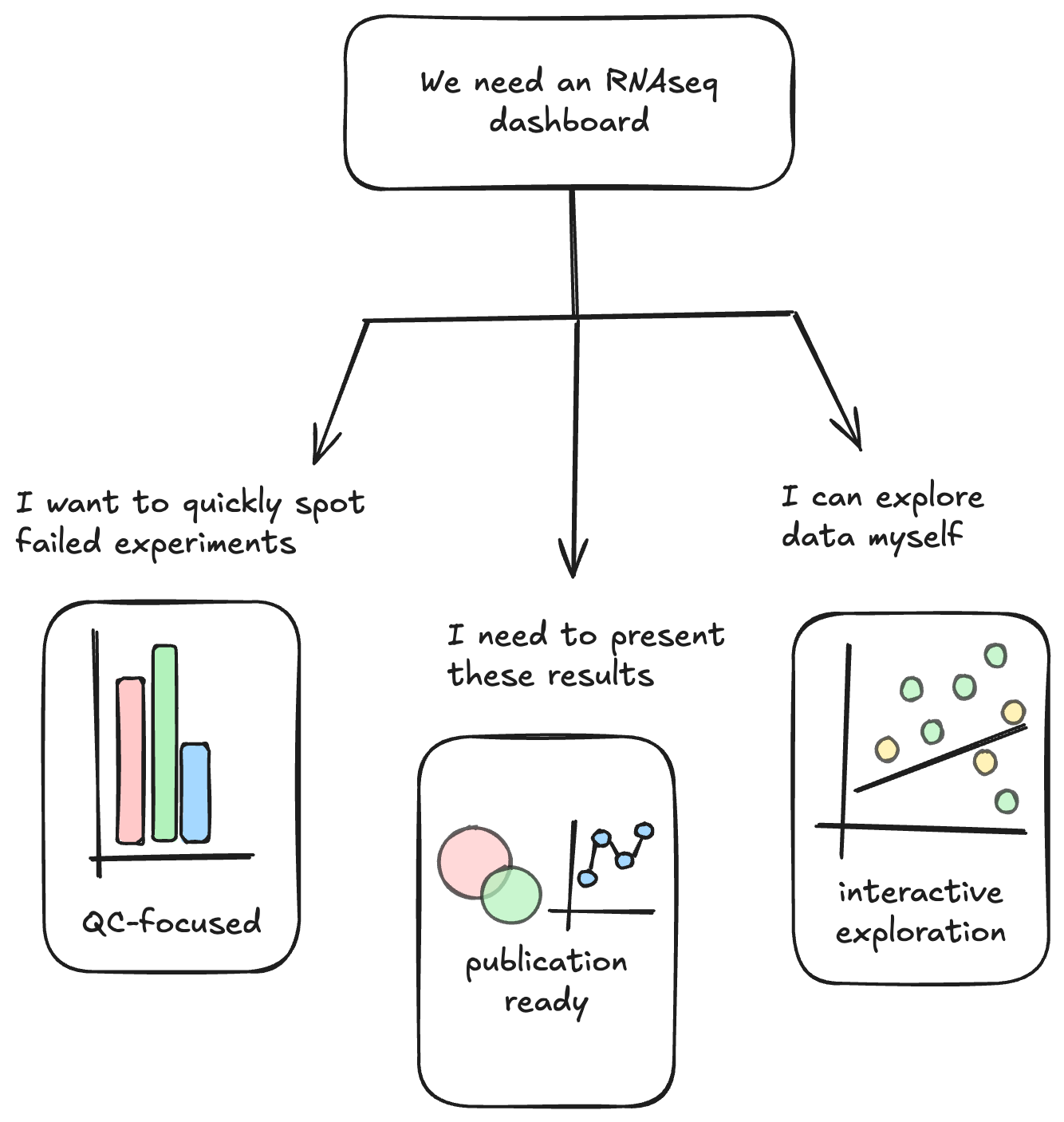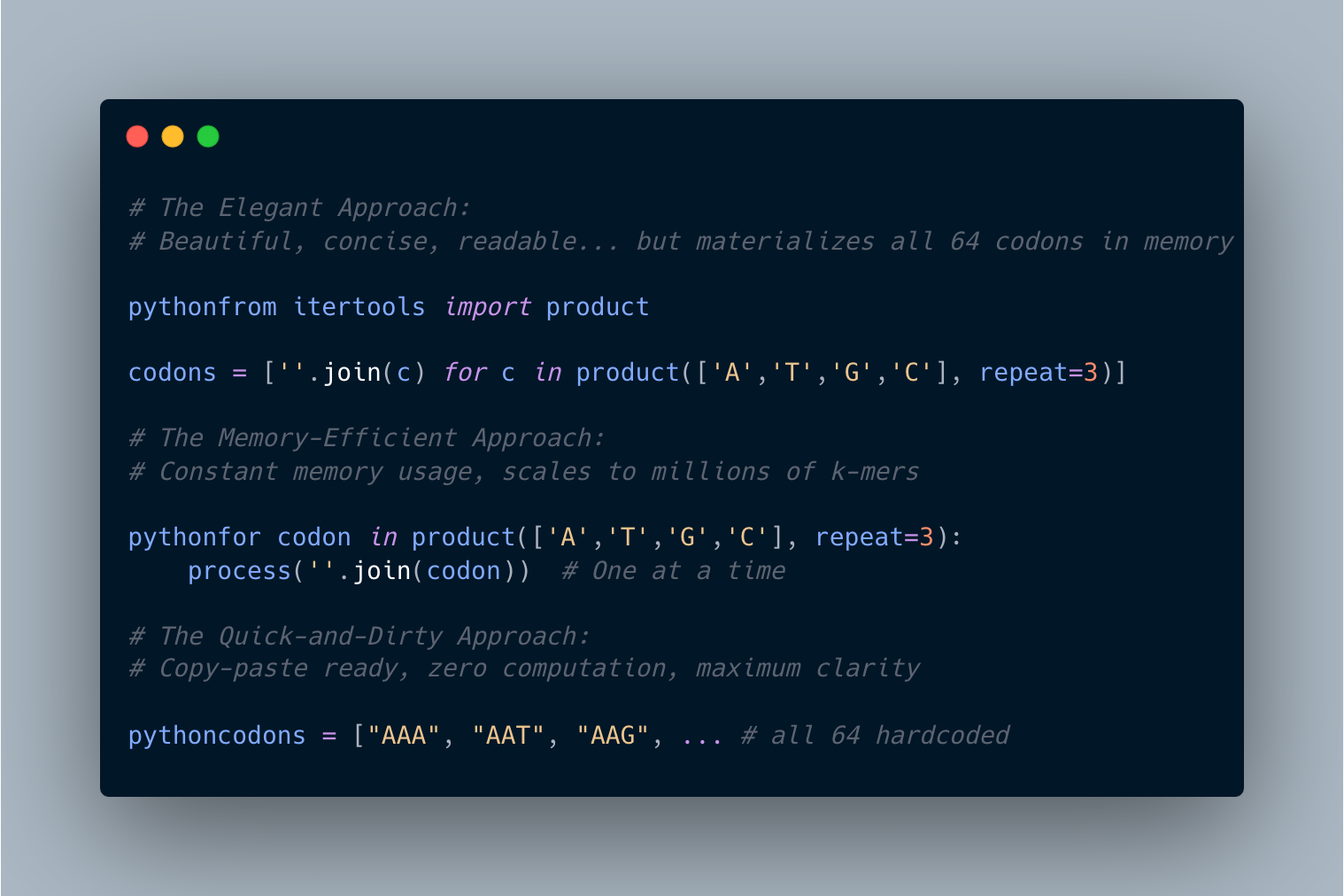· Lina L. Faller, Ph.D. · Quick Take · 2 min read
Reactive vs Proactive Bioinformatics
Bioinformatics enlightment occurs when one can regonize it has two main modes: reactive and proactive
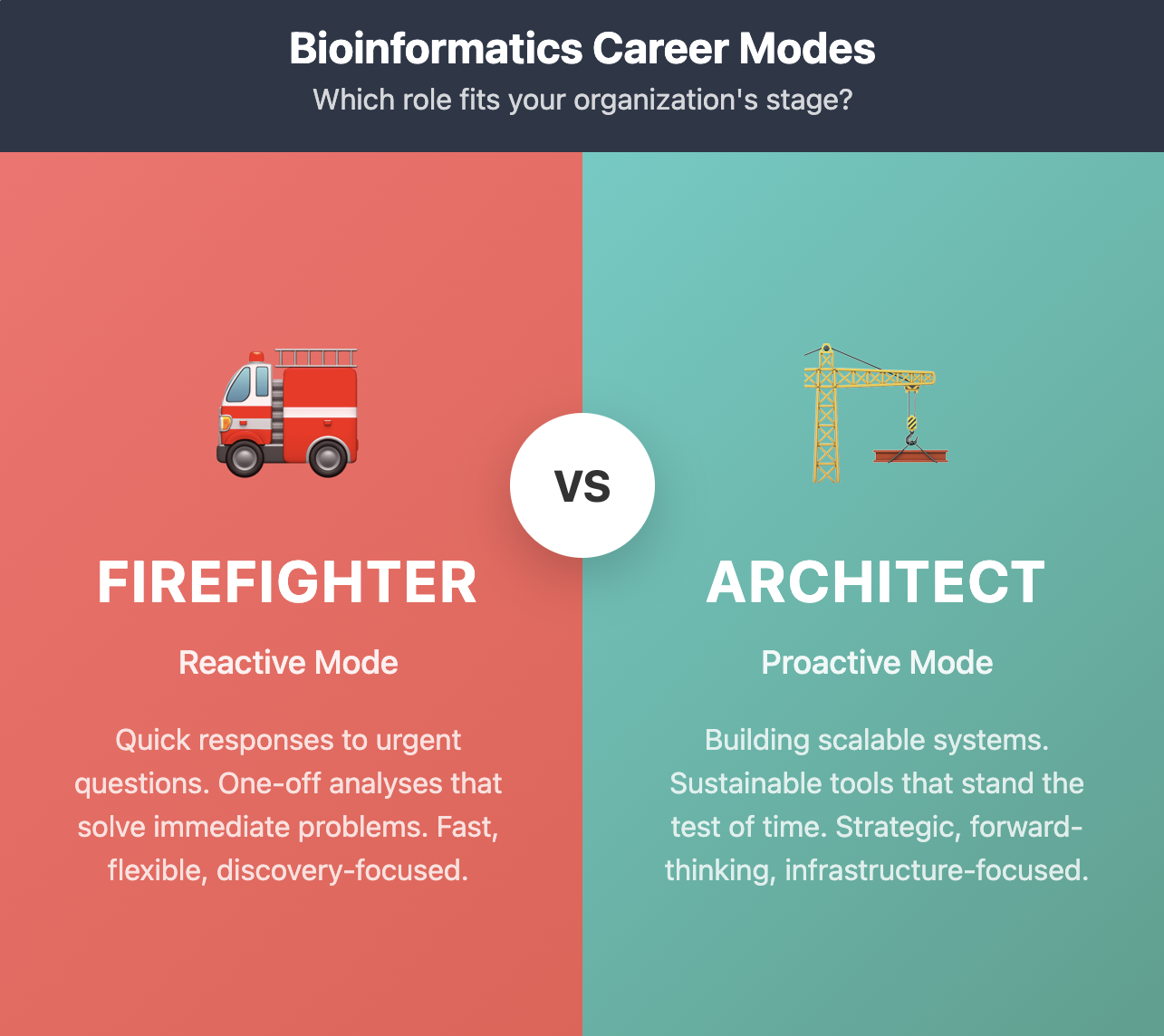
Early in my career, I lived in “reactive mode”—scientists would come to me asking: “Did this data accept or reject my hypothesis?” or “Where should I focus my next experiment?”
It was exciting! I worked on diverse projects, collaborated with brilliant people, and contributed to breakthrough discoveries. Science moved fast, and I was right in the thick of it.
But I was also building a graveyard of one-off solutions. Beautiful analyses that answered important questions… once. Then got tossed aside for the next urgent request.
As I matured, I craved something different: proactive mode. Building rock-solid tools that would stand the test of time. Engineering solutions that got better with use, not abandoned after use.
Both approaches have their place, and I’ve learned to recognize when each makes sense:
REACTIVE MODE works when:
- You’re in discovery phase and don’t know what questions you’ll need to answer
- Science is moving faster than infrastructure can keep up
- You need to prove value before investing in scalable solutions
PROACTIVE MODE works when:
- You have recurring analytical needs that justify engineering investment
- The company is ready to think beyond the next experiment
- You want to empower scientists with self-service capabilities
The key insight? This isn’t just about personal preference—it’s about organizational maturity.
Early-stage companies often NEED reactive bioinformaticians who can pivot quickly and answer urgent scientific questions. More mature companies benefit from proactive infrastructure that scales with their growing data needs.
The real skill is recognizing which mode your organization needs and adapting accordingly. Sometimes you need to be the firefighter, sometimes the architect.
Where do you find yourself today? Are you in reactive mode keeping up with urgent science, or proactive mode building for the future?


